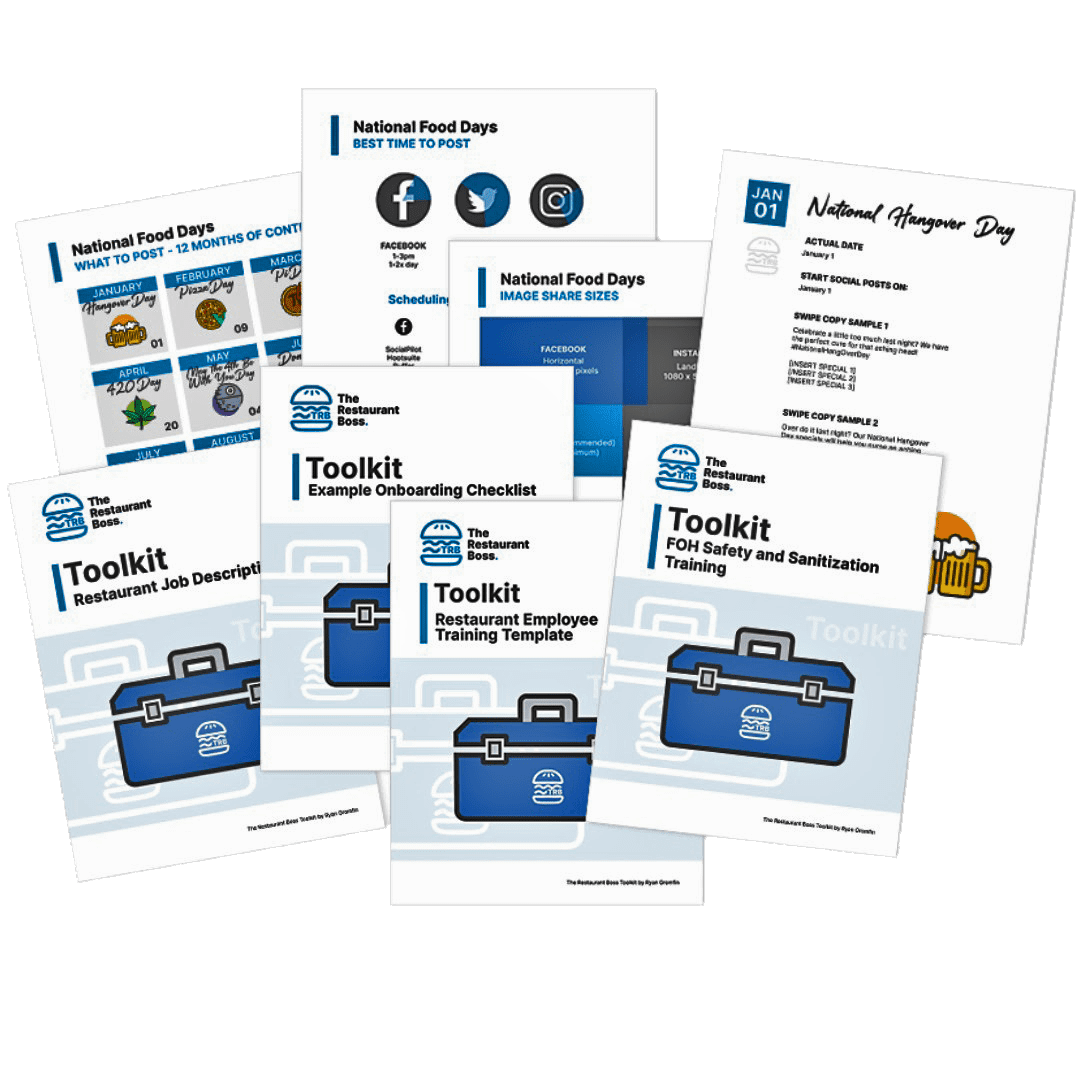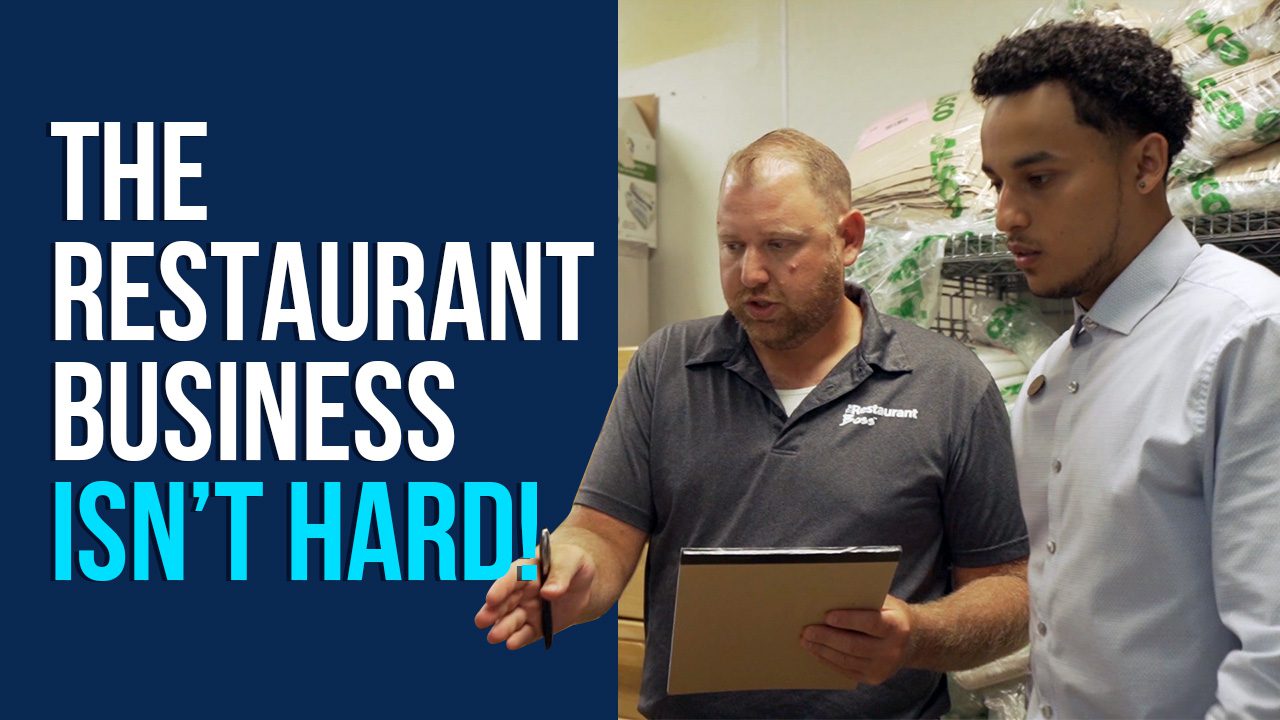Are Your Restaurant Cooks Too Slow?
Restaurant owners and operators, do you feel like your staff is just not prepping efficiently? I have a solution for you in today’s video!
Read the Video Transcript by Clicking Here...
Introduction
Hey restaurant owners and operators, do you ever feel like your staff is just not prepping efficiently? Like you could just go in the back and do this 10 times faster than they could and it’s driving you crazy! I’m going to explain to you the theory of efficiency in restaurants and how it relates to a manufacturing business, which is basically what a restaurant is.
My staff used to drive me crazy. I would watch them and go, “Oh my god, seriously? Just get out of the way and let me do this for you!” They were moving so slow and so inefficiently. It drives me even more crazy when I go visit other restaurants as a consultant to do analysis and training in the restaurants. What I see is just mind blowing and I have to ask who taught them to do it this way?
Often the answer I get is, “What do you mean? We don’t teach them how to do it, we just tell them what to do.”
Improving Efficiency
I always like to talk about the ‘why’ and the theory, so let me start with four main factors that are related to improving efficiency in any manufacturing type business. Basically a restaurant is a small manufacturing plant, we’re taking a product in one form and converting it to another that we sell. The four manufacturing principles that we are going to discuss today: transitions, order, speed, and method.
When you think about those 4 things and then think about an assembly line, like what Henry Ford created, it shows why it is so efficient. There’s no transitioning back and forth between projects; this is what you do and you do it all day. The order has already been predetermined by very smart people who studied this concept. Your line level staff don’t have to transition and they don’t change the order in which they do things, it’s already been predetermined. The speed is already set, the products are running down the line at a certain speed and you’ve got to get it installed within your time frame before the next one comes down. The method has been scientifically researched and studied over and over again to be the best. It’s a constant and never ending improvement theory.
I love assembly lines but also realize that they are not a very practical method for production in your restaurant. There are certain items that I used to do ‘assembly line’ methods on, like making homemade ravioli in one of the restaurants I worked at. We would set up like an assembly line where one person would roll out the dough, pass it down to another person with the filling, then another who would cut and seal them. We would just keep this going and make enough ravioli for 5 days. However, in general, you’re not running an assembly line. You have one person who has multiple things to do instead of one person who has only one thing to do.
With that said, let’s first talk about the 4 main factors of efficiency:
1) Transitions. This is the amount of time it takes your brain to adapt between projects. I’m sure you’ve noticed this, you’ll be very in depth into doing one thing and someone interrupts you and it takes you 15-20 minutes to get that focus back – if you can even remember what you were just doing. For example, you’ll be on the phone talking about something then a bolt of lightning or a door slams in your office and you get kind of jolted, then you’re like “Oh, where was I again?” This can mean different things to different people, but it has been proven over and over again in any sort of effectiveness, speed training, etc. that the more transitions or moves we have to make from project to project – the slower we get. The way that we combat transitions is to pre-determine the prep or what needs to get done. Instead of finishing an item then figure out what to do next over and over, take some time in the morning (or teach your team how) to write out a proper prep list for them then basically they don’t need to think anymore. I plan my entire week the Friday before, so Friday afternoon the last thing I do is plan out my whole week using a calendar. When Monday at 8:00 AM rolls around, I don’t need to think about what to do, I know what to do. My entire week has been planned out, I just do what’s in the calendar and it eliminates that 15-20 minutes every time you move between a project.
2) Order. It’s astonishing to me when I watch people do very quick and easy projects early in the morning and put very complex and detailed things in the afternoon and then they rush through finishing them. The order that we do things is very important. For example, if you’ve got soup that needs to cook for 2 or 3 hours then get that soup on the stove first. While it’s cooking, do some other things. I know that sounds obvious but you would be shocked if you walked into your restaurant and studied it the way that I would. When was the last time you stood in your kitchen for 8 hours with a notepad, watching the amount of steps your people take and the messed up order in which they’re doing things?
3) Speed. It comes from training or practice, but speed is just a raw factor that some people are going to be faster than the others. My son said to me the other day that he wanted to run faster, he wanted to beat one of his friends at school. I said “Great!” Every night we’re going to do 10 sprints so we know what 50 yards looks like in front of our house to our neighbor’s house. He gets faster because he does his sprints. The point is if you want to get faster, you have to have a goal and you have to measure it to improve. Are you helping your team get faster or are you just accepting the slowness at which they’re doing tasks?
4) Method. Sometimes this will increase speed. Sometimes it’s a matter of holding your knife right. Or instead of peeling an onion every time you need to dice it, you have onions already peeled in the fridge. Instead of peeling one onion and dicing it, peel all 4 onions then dice them. A lot of these overlap each other because part of that is order, part of it is speed, method and transitions but when you break it down you can understand this concept a little better.
I want to end with a very quick story about these two quotes:
“We don’t know what we’re capable of doing until we actually do it”
“We don’t believe it’s possible until we believe it’s possible”.
Roger Bannister, the first person ever to break the 4 minute mile. He just couldn’t get a 4 minute mile, hovering at 4:08 or 4:10. There were actually people studying why this was happening. A scientist wrote in a journal that it’s impossible to do this because the human body just can’t move that fast. Well guess what? One day Roger ran a sub 4 minute mile and within 3 weeks, 6 other people around the world did the same thing. How is it possible that from the dawn of time no one could run a sub 4 minute mile until one person did then suddenly everybody else could? Now it’s standard for professional runners. The answer: they didn’t believe it was possible until they believed it was possible.
Perhaps a better story for you to relate to goes back to one of the restaurants I was operating way back in the day. We had a deli so we did a lot of our prep in the morning and then put it out in the hot and cold cases. One of my cooks was a great guy and a good hard worker. He would come in at 6:30AM to get everything ready. He’d have the hot and cold deli case ready by about 11:00 and then go home at about 11:30AM. He was a part-time employee who worked for me 3-5 days a week and 5-6 hours a day. He was phenomenal, nothing wrong with this guy at all.
One day he called out sick and I was really tired because I was out late the night before. When I got the call it was early and I decided to sleep a little more and come in a little bit later. I came in at 8:00 and I got the station set up by 10:30. How did I do that? My cook comes in at 6:30 and doesn’t get ready until close to 11. I worked the station for a couple more days until he felt better and when he came in, we worked together. We started at 6:30 in the morning then we were done by about 10. He was amazing ed and asked me how that was possible? The next day, I just watched what he did. He realized some of the things that he wasn’t doing right in both order and speed. From working with me, he learned that he could do it faster in a certain order. That’s just an innate ability for me since I grew up working at high quality restaurants at a very young age but for others it’s not. After about a week or so of me coaching him, he was able to start coming in almost 2 hours later and get the same amount of work done in about 2 hours less time. It took some coaching but it also took some believing. It took me doing it first, then teaching him how to do it, and then him being able to repeat the process.
Final thoughts
So if you’re having challenges with your team not getting enough done in the right amount of time, I would highly encourage you to write down these 4 things on a piece of paper, then go stand in your kitchen and audit. Audit their transitions, the order in which they’re doing things, the speed at which they’re doing things, and the methods that they’re using. And then it’s your job to teach better ways. If you don’t know how to do this audit, then maybe consider hiring someone like me to come out to your restaurant and talk you through how to do this.
If this is a topic you’re particularly interested in or want to learn more about, here’s a link to our Facebook live where we go back and talk more in depth about the previous week’s video. Hope you have an absolutely wonderful week and remember the quality of your systems equals your level of success.
Read More
Running a Restaurant Isn't Hard
The #1 complaint in restaurant management is poor employee performance. If you’re not following this simple 5-step plan to train your employees, you’re never going to get the results that you want from them …ㅤㅤㅤ
Busy Is Killing Your Restaurant
Are you busy? There are things you’re doing all day, every day in your restaurant and it’s those things that are going to put you out of business. There are 4 things you can do today to battle the busy inside your restaurant …
Follow For More:







